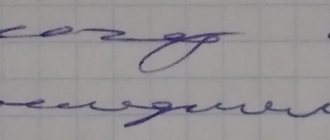Many people justify their failures and unseemly actions by their character traits. Indeed, how a person behaves depends on the character that develops over the years. But is it really impossible to change it?
Modern psychologists and psychotherapists believe that a person is quite capable of controlling his character and even changing it at his own discretion. The first thing you should do is get rid of complexes and bad habits, and we are talking not only about addictions, but also about negative patterns of behavior.
Most often, character correction involves the eradication of character traits such as self-doubt, doubts in decision-making, embarrassment when communicating with significant people, phobias, etc. Many specialists today use various NLP (neuro-linguistic programming) techniques to change the client’s deep internal attitudes.
The decision that their character needs to be changed is usually made by those people who find it difficult to achieve their goals, meet other people, maintain long-term relationships, or be interesting due to certain personal characteristics.
For example, a person who has risen one step higher in his career may want to change his character. The new position requires him to be more responsible, sociable and calm, i.e. those qualities that he lacks. In such a situation, he has to look for a way to develop the necessary character traits.
- Get rid of internal fears and limitations
Often the inability to overcome oneself is associated with the inability to control the inner self, the fear of stopping “being yourself,” the fear of change, etc. In order to acquire the necessary self-confidence, determination and other positive qualities, it is necessary to identify those fears. Which prevent you from achieving your goal, and then eliminate them. Usually, this requires special training or consultation with a psychologist.
- Reconsider your past
It's no secret that the foundation of character is laid in childhood, so in order to change negative character traits, you need to understand where they came from. For example, overly strict parental upbringing can cause a child to develop self-doubt, shyness, and the inability to make independent decisions and take responsibility for them.
- Find the motive
In order to change your character, you need to clearly understand why it is necessary. Without internal motivation, even the most advanced and effective techniques will not help a person.
Willpower is a character trait
The concept of “willpower” is quite often associated with forcing factors: a strict diet, quitting smoking, alcohol, being forced to read or study. It is extremely necessary and irreplaceable throughout human life and in all its spheres: sports, career, spiritual self-knowledge and development. Willpower really helps us focus our minds on achieving goals, forcing us to go without looking back and without stopping halfway to “take a break.”
Willpower needs to be constantly developed. A person with willpower boldly dictates to his mind and subconscious what he needs: what to imagine, what to focus on and how to think. In the absence of this skill, we turn into parents who love their child with blind, sick love: we allow any whim and thought to control us. How can we ensure that willpower constantly follows us as we grow, mature and age?
Strengthening willpower:
- Self-respect Respect yourself - if you decide something for yourself, do it, committing to go to the end. Don't change your mind and don't put it off until later.
- Freedom from habits Don't become a slave to habits. Don’t do things in the same way—be creative.
- Do what you least want to do. You need to force yourself to devote time and energy to what you don’t want to do, remembering that only our laziness and lack of self-confidence prevent us from completing this or that task.
- More is better Do more than you planned: read 5 pages more, periodically increase your walking distance, clean a larger area than you planned.
Failure is always a new starting point. Start again and again. Strong, self-confident people are not deterred by defeat. The end of the old is always the beginning of the new.
How to write a term paper on speech therapy
07.09.2010 179893
These guidelines are compiled to help students gain an understanding of the content and structure of coursework in speech therapy.
Logopedia of pedagogical science that studies anomalies of speech development with normal hearing, explores the manifestations, nature and mechanisms of speech disorders, develops the scientific basis for overcoming and preventing them means of special training and education.
The subject of speech therapy as a science is speech disorders and the process of training and education of persons with speech disorders.
The object of study is a person suffering from a speech disorder.
The main task of speech therapy as a science is the study, prevention and elimination of various types of speech disorders.
Coursework in speech therapy is a student's scientific and experimental research. This type of educational activity, provided for by the educational and professional program and curriculum, contributes to the acquisition of skills in working with literature, analyzing and summarizing literary sources in order to determine the range of insufficiently studied problems, determining the content and methods of experimental research, processing skills and qualitative analysis of the results obtained. The need to complete coursework in speech therapy is due to the updating of knowledge concerning the content, organization, principles, methods and techniques of speech therapy work.
As a rule, during their studies, students must write two term papers - theoretical and practical.
The first course work should be devoted to the analysis and synthesis of general and specialized literature on the chosen topic. Based on this analysis, it is necessary to justify and develop a method of ascertaining (diagnostic) experiment.
In the second course work, it is necessary to provide an analysis of the results obtained during the ascertaining experiment, as well as determine the directions and content of speech therapy work, and select adequate methods and techniques of correction.
So, let’s present the general requirements for the content and design of coursework in speech therapy.
The initial and most important stage of working on a course project is the choice of a topic, which is either proposed by the supervisor or chosen by the student independently from a list of topics that are consistent with the areas of scientific research of the department.
Each topic can be modified, considered in different aspects, but taking into account a theoretical and practical approach. Having chosen a topic, the student needs to think through in detail its specific content, areas of work, practical material, etc., which should be reflected both in the formulation of the topic and in the further construction of the study. It should be recalled that the chosen topic may not only have a purely theoretical orientation, for example: “Dysarthria. Characteristics of the defect”, “Classification of dysgraphia”, but also take into account the practical significance of the problem under consideration, for example: “Speech therapy work on speech correction for dysarthria”. It should also be taken into account that when formulating a topic, excessive detail should be avoided, for example: “Formation of prosodic components of speech in preschoolers of the sixth year of life attending a preschool institution for children with severe speech impairments.”
The course work includes such mandatory parts as: introduction, three chapters, conclusion, bibliography and appendix.
The text of the term paper begins with the title page . An example of its design can be seen here.
Then the content of the work is given, in which the names of chapters, paragraphs, and sections are formulated in strict accordance with the content of the thesis. An example of its design can be seen here.
In the text, each subsequent chapter and paragraph begins on a new page. At the end of each chapter, the materials are summarized and conclusions are formulated.
The introduction reveals the relevance of the problem under consideration in general and the topic being studied in particular; the problem, subject, object, and purpose of the study are defined. In accordance with the goal and hypothesis, objectives and a set of research methods aimed at achieving the objectives must be defined.
The relevance of the topic lies in reflecting the current level of pedagogical science and practice, meeting the requirements of novelty and usefulness.
When defining the research problem, it is important to indicate what practical tasks it will help to implement in training and educating people with speech pathology.
The object of research is understood as certain aspects of pedagogical reality, perceived through a system of theoretical and practical knowledge. The ultimate goal of any research is to improve this object.
The subject of research is some part, property, element of an object, i.e. the subject of research always indicates a specific aspect of the object that is to be studied and about which the researcher wants to gain new knowledge. An object is a part of an object.
You can give an example of the formulation of the object, subject and problem of research:
– The object of the study is the speech activity of preschool children with phonetic-phonemic speech disorders.
– The subject of the study is the features of intonation speech of children with phonetic-phonemic speech disorders.
– The research problem is to determine effective directions for speech therapy work on the formation of intonation expressiveness of speech in the system of correctional intervention.
The purpose of the study contributes to the specification of the object being studied. The goal of any research is to solve a specific problem. The goal is specified in tasks taking into account the subject of research.
The research objectives are formulated in a certain sequence, which determines the logic of the research. The research objectives are set on the basis of a theoretical analysis of the problem and an assessment of the state of its solution in practice.
The first chapter is an analysis of literary sources, which examines the state of this problem in historical and modern aspects, and presents the most important theoretical principles that formed the basis of the study.
When writing the first chapter, you should pay attention to the fact that the text of the course work must be written in a scientific style. When presenting scientific material, it is necessary to comply with the following requirements:
– Specificity – a review of only those sources that are necessary to disclose only a given topic or solve only a given problem;
– Clarity – which is characterized by semantic coherence and integrity of individual parts of the text;
– Logicality – which provides for a certain structure of presentation of the material;
– Reasoning – evidence of thoughts (why this and not otherwise);
– Precision of wording, excluding ambiguous interpretation of the authors’ statements.
A literary review of the state of the problem being studied should not be reduced to a consistent presentation of literary sources. It should present a generalized description of the literature: highlight the main directions (currents, concepts, points of view), analyze in detail and evaluate the most fundamental works of representatives of these directions.
When writing a work, the student must correctly use literary materials, make references to the authors and sources from which the results of scientific research are borrowed. Failure to provide required references will reduce your coursework grade.
As a rule, in coursework on speech therapy, references to literary sources are formatted as follows: the number of the cited source in the general list of references is placed in square brackets. For example: General speech underdevelopment is a speech pathology in which there is a persistent lag in the formation of all components of the language system: phonetics, vocabulary and grammar [17].
When using quotations, in square brackets, in addition to indicating the source number, the page number from which this excerpt is taken is indicated, for example: Speech rhythm is based on a physiological and intellectual basis, since, firstly, it is directly related to the rhythm of breathing. Secondly, being an element that performs a communicative function, “correlates with meaning, i.e. controlled intellectually” [23, P.40].
However, course work should not be of a purely abstract nature, so you should not abuse the unreasonable abundance of citations. Quoting should be logically justified, convincing and used only when really necessary.
In the second chapter , devoted to experimental research, the organization should be described and the program of the ascertaining experiment should be presented. The survey methodology, as a rule, consists of a description of several series of tasks, with detailed instructions, visual and lexical material, the procedure for completing tasks by experiment participants, and scoring criteria. This chapter also provides a qualitative and quantitative analysis of the results obtained.
When analyzing the results of an experiment, it is necessary to use a scoring system. Examples of various criteria for quantitative and qualitative assessment are presented in the following works:
– Glukhov V.P. Formation of coherent speech in preschool children with general speech underdevelopment. - M.: Arkti, 2002. - 144 p.
– Fotekova T.A. Test methodology for diagnosing oral speech of primary schoolchildren. - M.: Arkti, 2000. - 56 p.
– Levchenko I.Yu. Pathopsychology: Theory and practice. - M.: Academy, 2000. - 232 p.
In order to visually present the results obtained during the experimental study, it is recommended to use tables, graphs, diagrams, etc. Histograms can be used in a variety of ways - columnar, cylindrical, planar, volumetric, etc. An example of the design of tables, figures, and histograms can be found here.
The third chapter provides a rationale for the proposed methods and techniques and reveals the content of the main stages of correctional work.
The conclusion contains a summary of the material presented and the main conclusions formulated by the author.
The bibliography must contain at least 25 sources. The list includes bibliographic information about the sources used in preparing the work. An example of its design can be seen here.
In the application you can present bulky tables or illustrations, examination protocols, observation records, products of activity (drawings, written works of children), notes from speech therapy classes, etc.
The volume of one course work must be at least 30 pages of typewritten text.
In general, coursework in speech therapy is the basis for a future thesis, in which the study of the begun problem can be continued, but from the standpoint of a different approach or a comparative analysis of the disorders being studied in different age categories of people with different types of speech disorders.
The content and format of theses in speech therapy can be found here.
Literature:
1. How to write a term paper on speech therapy: Methodological recommendations. Educational and methodological manual / Comp. Artemova E.E., Tishina L.A. / Ed. Orlova O.S. – M.: MGOPU, 2008. – 35 p.
2. Research work of students in the system of higher professional pedagogical education (specialty 031800 - Speech therapy). Methodological recommendations for completing the thesis / Compiled by. L.V. Lopatina, V.I. Lipakova, G.G. Golubeva. - St. Petersburg: Publishing house of the Russian State Pedagogical University named after. A. I. Herzen, 2002. - 140 p.
Conflict and personality types
It is difficult to imagine our life without stress and difficulties. As a result, a conflict situation often accompanies difficult life lessons. And no matter where we are: at home, at school or at work, there is always a risk of conflict.
Conflict is not an easy confrontation; it is a clash between two personalities. Each of which has its own experience and life position. A conflict situation largely depends on the psychological characteristics of a person. The behavior of each individual in a conflict will have its own characteristic features.
A controversial situation cannot arise without a reason. The key to a conflict situation can be a careless word, action or inappropriate behavior for the opponent. This is precisely the basis on which conflict appears, grows and grows.
PERSONALITY AND CHARACTER OF PERSON
Having discussed the issue of character formation, it is natural to now turn to finding out how character and personality are related, especially since we have already discussed a similar question in connection with the consideration of temperament.
In the general structure of personality, character occupies a central place, uniting all other properties and behavioral characteristics. A person’s character undoubtedly influences his cognitive processes - perception, attention, imagination, thinking and memory. This influence is exercised through volitional and instrumental character traits. A person's emotional life is directly influenced by character. The same can be said about motivation and will itself. First of all, character determines the individuality and originality of a person.
Character differs from other personality traits primarily in its stability and, as we have seen, in its earlier formation. If, for example, the needs, interests, inclinations, social attitudes, and worldview of a person as a whole can change almost throughout a person’s life, then his character, once formed, remains more or less stable. The only exceptions, perhaps, are cases of severe diseases that affect the human brain, as well as deep organic changes in the central nervous system that occur with age, after which, for purely organic reasons, a person’s character may change. Finally, some of its changes may occur during life crises, which also cannot be considered as completely normal phenomena.
3 pages, 1033 words
QUESTION ╣ 14 Concept of character. Character types. Its features, properties
... Question No. 14 The concept of character. Character types. Its features, properties. Character (from Greek - “trait”) is a distinctive feature that a person acquires while living in society. Character is an individual combination... E. Lichko. The character of many teenagers becomes accentuated - an extreme version of the norm. There are 10 main types of accentuation. 1. Hyperthymia. People prone to increased...
One of the human character traits that exhibits particular age and temporal stability is sociability
or a trait related in meaning to it -
isolation,
as well as more general character traits, of which the two mentioned are included as components -
extraversion
and
introversion.
C. Jung contributed a lot of useful information to understanding the genesis and functioning of these character traits.
“Considering the course of human life,” he wrote, “we see that the destinies of one are determined primarily by the objects of his interests, while the
destinies of another are determined primarily by his own inner life.”
The first type of people can be called extroverted,
the second -
introverted.
Extraversion and introversion as personality traits express, respectively, a person’s openness or closedness in relation to the world and to other people. In the case of an extrovert, we are dealing with a sociable person who always and everywhere shows a special interest in what is happening around him. In the case of an introvert, on the contrary, we notice that all the person’s attention is directed to himself and he becomes the center of his own interests. An introverted person puts himself and his individual inner world above what is happening around him. An extrovert, on the contrary, places the external world above his internal subjective experiences. This is the most general characteristic of these two, the most common personality types, based on different character traits. Let's take a closer look at their other psychological characteristics.
Extraversion is associated with certain character accentuations, in particular exaltation, demonstrativeness, excitability, hyperthymia, and sensitivity. All these character traits, taken together, usually form a single complex and occur together in a person. A person with such a complex of character traits is distinguished by increased activity and attention to what is happening around him. He responds vividly to relevant events and seems to live by them. Introversion correlates with a different set of personality traits, primarily with anxiety, pedantry, schizoidness, hysteria, and psychasthenia. People who have this complex of characterological characteristics are distinguished by their detachment from what is happening around them, aloofness, and independence.
30 pages, 14564 words
Parents of teenagers' ideas about their child's character
... the character and individuality of another person’s behavior. The same can be observed in the self-perception of a teenager: ... the group is quite stable, the admission of new members is often associated with special “tests” or ... Specifying the characteristics of family upbringing, we can identify the types of family upbringing as a factor influencing ... the personality traits of your child. In the first case, this manifests itself in the fact that the teenager...
Almost the same stability as extraversion and introversion is revealed by a complex of characterological personality traits that manifest themselves in the defense mechanisms we have already considered.
A person’s character is related to his interests, needs, and most of all is manifested in what is significant to a person. Therefore, you can correctly judge a person’s character by carefully observing how he behaves in significant life situations that allow him to satisfy his strongest and most pressing needs.
Dependence of temperament on character
In many ways, a person’s reaction to a particular controversial situation depends on his temperament and character. It is known that sanguine and choleric people give free rein to their feelings more vividly and emotionally. Sanguine people, being lovers of an active lifestyle and being surrounded by a large number of people, tend to sort things out “loudly”. While choleric people, not striving for publicity, are simply unable to restrain their impulse to throw out their emotions, even if they later regret it.
Phlegmatic people approach this matter judiciously, weighing and considering every step. They will monotonously and purposefully explain their position rather than shout and wave their arms. Melancholic people will not enter into conflict at all; they will experience all their indignation and discontent inside, while reproaching and scolding themselves, thinking that the root of the problems is in them. There are exceptions to every rule, and sometimes the reaction can vary from case to case, since, in addition to temperament, the reaction to conflict is shaped by one’s worldview.
A person’s view of life and the world, of people in this world and of himself is precisely what can outweigh temperament and radically change the outcome of a controversial situation.
Throughout life, a person receives enormous, incomparable experience. Over time, either lessons are learned and consciousness is improved, or all the information received goes unheeded. As a consequence of this perception, every new time we step on the same rake. It is self-development and respect for another person as an individual and formed personality that can provide understanding and ways to constructively resolve the conflict. Psychologist Kuznetsov A.V.
CHARACTER BUILDING
IN
To what extent is a person’s character stable? Some character traits that are stable throughout a person’s life are already found in young children, for example, preschoolers. This means that the origins of a person’s character and the first signs of its stabilization should be sought at the very beginning of life.
The main role in the formation and development of a child’s character is played by his communication with people around him. In his characteristic actions and forms of behavior, the child first of all imitates his close adults. With the help of direct learning through imitation and emotional reinforcement, he learns the forms of adult behavior.
10 pages, 4554 words
Human motor activity at different periods of life
MINISTRY OF EDUCATION AND SCIENCE OF THE RUSSIAN FEDERATION Federal Agency for Education STATE EDUCATIONAL INSTITUTION OF HIGHER PROFESSIONAL EDUCATION UFA STATE PETROLEUM TECHNICAL UNIVERSITY Department of Physical Education Abstract on the course “Physical Education” on the topic: “Human motor activity at different periods of life" Completed by: student. gr. AT-07-01 ...
The sensitive period of life for the development of character can be considered the age from 2-3 to 9-10 years, when children actively and extensively communicate both with surrounding adults and with peers, are open to outside influences, readily accept them, imitating everyone and in everything. At this time, adults enjoy the child’s unlimited trust and have the opportunity to influence him with word, deed and action, which creates favorable conditions for reinforcing the desired forms of behavior.
The style of communication between adults with each other in front of a child, the way they treat him himself is very important for the development of character. This especially applies to the treatment of parents with a child, primarily the mother. The way a mother and father act towards a child many years later becomes the way he treats his children when the child becomes an adult and starts his own family.
Before others, such traits as kindness, sociability, responsiveness, as well as their opposite qualities: selfishness, callousness, indifference to people are laid down in a person’s character. There is evidence that the beginning of the formation of these character traits goes deep into preschool childhood, to the first months of life and is determined by the way a mother treats her child (remember the first stage of personal development according to E. Erikson).
Those character traits that most clearly manifest themselves in work—hard work, accuracy, conscientiousness, responsibility, perseverance, and other “business” qualities—develop somewhat later, in early and preschool childhood. They are formed and reinforced in children’s games and the types of household work available to them. Stimulation from adults that is appropriate to the child’s age and needs has a strong influence on their development. In the character of a child of this age, mainly those traits that are constantly supported (positive reinforcement) are preserved and consolidated.
In the elementary grades of school, character traits that manifest themselves in relationships with people are developed. This is facilitated by the expansion of the child’s sphere of communication with others due to many new school friends and adults - teachers. If what a child as an individual acquired at home receives support at school, then the corresponding character traits are reinforced and most often remain throughout his entire life. If the newly acquired experience of communicating with peers, teachers, and other adults does not confirm as correct the characteristic forms of behavior that the child acquired at home, then a gradual breakdown of character begins, which is usually accompanied by pronounced internal and external conflicts. The restructuring of character that occurs does not always lead to a positive result. Most often, there is a partial change in character traits and a compromise between what the child was taught at home and what the school requires of him.
10 pages, 4529 words
The influence of television on human behavior and the psyche of children
Posted at https://www. Posted at https://www. Test in the discipline Social Security On the topic: “The influence of television on human behavior and the psyche of children” Introduction How does television influence people? What changes in a person’s consciousness and behavior after watching television programs? Hundreds of studies have been devoted to the effects of mass communication, but scientists around the world still...
In adolescence, strong-willed character traits are actively developed and consolidated, and early adolescence lays the basic moral, worldview, and foundations of it.
By the end of school, a person’s character can be considered basically established, and what happens to him in the future almost never makes a person’s character unrecognizable to those who interacted with him during his school years.
Social character of personality
The social character of a person is understood as those qualities that should be characteristic of absolutely all people of a particular society. When going out into society, a person must show not only individual traits, but also those qualities that are considered acceptable, approved, and normal. This set is formed by society, the media, culture, education, educational institutions, religion, etc. It should be noted that parents also raise their children depending on the framework and norms that are accepted in society.
According to E. Fromm, the social character of a person is a person’s way of adapting to the society in which he is located. This is an unpunished and free way of existing in a particular society. He believed that no society allows a person to fully realize himself, since he always dictates its own rules and norms, which should be above individual characteristics and desires. This is why a person is always in conflict with society, when he must obey in order to be accepted, or tries to protest, which can be punishable.
Society will never allow a person to express himself in full force, which prevents him from realizing his inclinations and harms the individual himself. A distortion of character must occur when everyone fits themselves into certain frameworks and norms accepted in society. Only through the development of social character in a person does society make him safe for itself. What is important here is not the personality, but its safe manifestations that will be acceptable in society. Otherwise, there will be punishment for any individual self-expression that does not fit into the framework.
go to top
Character.From a psychological point of view, character
- this is a set of stable, individual personality traits that
develop and manifest themselves in activity and communication, determining the individual’s typical modes of behavior.
These individual characteristics that form a person’s character relate primarily to
the volitional sphere
(for example, determination or uncertainty, fearfulness) and to
feelings
(for example, cheerfulness or depression).
To a certain extent, they are also manifested in mental activity (for example, frivolity or thoughtfulness. Individual characteristics of a person’s behavior are determined by his character. As ancient people said, character is the stamp of a person, an “imprint” acquired in the process of education and self-education. A person’s character is manifested in his behavior, actions and deeds in society. Remember how you learn. One does his homework quickly, another slowly and thoroughly, the third immediately gets down to business and only after that begins to think about how it would be better to cope with the task. Some of you are open-minded, others are reserved in communication, withdrawn, think about their own things, others also think about class matters common to all, they are concerned about how to make the life of the class interesting. These features make up character traits. Character is the totality of a person’s qualities, manifested in the characteristics of his behavior and attitude towards surrounding reality.Character
is based on the properties of the human nervous system, which are largely inherited. For example, when characterizing someone, we say: “The spitting image of a father - lively, sociable.” These qualities of character, expressed in a person’s focus on people, himself, activities, and things, are very often passed on from parents to children.
Altruism and egoism
These are two opposite types of human behavior towards people and themselves;
altruism
is serving the people around you, living “for others,”
egoism
is, on the contrary, behaving only “for yourself.” Extreme manifestations: an egoist harms others for his own sake, an altruist gives himself, sacrifices himself for the sake of others. But do not rush to call one bad, the other good. As E. Fromm said, “a person who loves only others, without loving himself, is not capable of love at all.” In other words, a person needs a measure of both.
Character is not something given once and for all. It's forming
, changes throughout a person’s life. A person creates his own character. From an action to a habit, from it to a character, and from a character to one’s destiny. This will be the recipe, the algorithm for developing character traits.
Almost every character trait has an opposite trait
. For example, politeness is a socially approved trait, but impudence and rudeness are not approved by people. These two traits form a pair of opposite qualities that can exist simultaneously (in different proportions) in a person’s character.
Relationship between character and personality
.
Let us remember what we know about the personalities of outstanding people. It is believed that F. M. Dostoevsky had a difficult character; II had a very “cool” character. P. Pavlova, A.S. Green was distinguished by unsociability: but this did not prevent them from becoming outstanding personalities. This means that character and personality are far from the same thing. What a person creates, his “creations” are, primarily, an expression of his personality. Descendants use the results of the individual’s activities, but the people around him come across the person’s character and sometimes suffer in everyday communication. If we try to briefly express the essence of the difference between character and personality, we can say that character traits
reflect how
a person acts
, and
personality traits
reflect
what he acts for
. It is obvious that the methods of behavior and the orientation of the individual are relatively independent: using the same methods, you can achieve different goals and, conversely, strive for the same goal in different ways.
Character is the individual makeup of a person, manifested in the characteristics of his behavior and attitude to the surrounding reality. Character is a whole set of qualities
(traits) characterizing human activity and reflecting his typical positions, relationships, and principles. Persistence, determination, sensitivity, courage, and politeness can be considered character traits if they constantly manifest themselves in various situations and have become stable properties and qualities of a person.
Character is often related to temperament (which you will learn about in the next lesson). For example, choleric people most often have a quarrelsome character, while phlegmatic people have a calm character. But people with the same temperament can have completely different characters. Knowledge of character allows us to predict a person’s behavior in certain situations. So, the commander sends this particular soldier on reconnaissance, knowing that he is brave and resourceful.
Extroversion and introversion
When characterizing this or that person, sometimes they also talk about him like this: “extrovert” or “introvert.” What does this mean?
An extrovert
is
a person with an open soul, he is friendly to people, and does not have any secrets or secrets from them. This is a smart guy who does not tolerate loneliness, is very sociable, and is able to win people over. Such a person can take on many problems and solve them.
Introvert
closed, concentrated, silent, secretive. He knows how to listen, but does not like to talk about himself and his problems. With developed self-control, but overly self-critical, constantly engaged in self-examination and self-criticism. Prefers solitude. Has difficulty making new acquaintances.
Knowing this, you can easily determine who you are - an extrovert or an introvert, who your friends, family, acquaintances are. You may have noticed that people with melancholic and phlegmatic types of temperament are closest to introverts, and choleric and sanguine people are closest to extroverts. True, it is also difficult to meet “pure” extroverts or introverts. Almost every person exhibits these and other qualities. We can only talk about their predominance.
Optimism and pessimism
A very important feature is the attitude towards the surrounding world.
Optimism
- this is a cheerful and cheerful attitude in which a person sees the bright side in everything, believes in the future, in success, in goodness, in everything positive.
Pessimism,
on the contrary, it is despondency, decadence, disbelief, expecting bad things in everything.
Male and female character
Boys and girls (men and women) have some distinctive character traits. They are associated with gender differences, characteristics of the male and female body, with
customs of society regarding
Russian character
Character, like temperament, is one of the qualities that distinguishes not only an individual person, but an entire group - a nation, nationality, people. Thus, the character of the Germans is characterized by neatness, the British —
stiffness, the French - frivolity, the Americans - practicality...
Evaluate the character of your subject using the proposed drawings, characteristics and tests!
Psychological character of personality
Changes that occur in the psychological character of a person are divided into natural (typical) and individual (atypical).
Natural changes occur as a person grows up and goes through certain changes in his body. Childish features disappear, replaced by adult ones. Childhood traits include capriciousness, irresponsibility, fears, and tearfulness. For adults - wisdom, life experience, tolerance, rationality, prudence, etc.
Much here is determined by the situations that a person often encounters. Communication with people, various circumstances, successes and failures, tragedies determine a person’s change of views and values. This is why people of the same age group differ from each other because everyone has had their own life experiences. Here individual traits are formed, which depend on the life circumstances through which each person passes.
Traits are quickly replaced by others if they are similar to or include previous ones.
go to top









